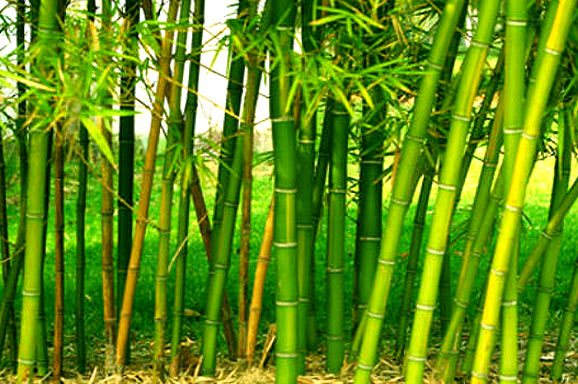Green Gold: Bamboo
Welcome to “Green Gold: Bamboo Farming as the Future of Indian Agriculture,” a comprehensive blog that aims to uncover the potential of bamboo farming in transforming Indian agriculture. In this Blog, Let’s explore why bamboo, also known as ‘green gold’, holds the key to a sustainable and profitable future in farming for India.
In India, a country rich in biodiversity and cultural heritage, agriculture plays a pivotal role in the economy. However, with the challenges of climate change, water scarcity, and soil degradation, there is a pressing need to explore innovative, sustainable, and profitable farming practices. This is where bamboo farming comes in.
India is a country steeped in tradition but always on the path of progress. As Mahatma Gandhi once said, “The future depends on what we do in the present.” One such path for progress is bamboo cultivation, a largely untapped resource with immense potential for revolutionizing Indian agriculture.
Overview of Bamboo Cultivation
Bamboo, often referred to as the ‘green gold’, is one of the fastest-growing plants in the world, with some species growing up to 3 feet in 24 hours[^1^]. It is incredibly versatile, with over 1,500 documented uses[^2^]. There are over 136 species of bamboo found in India, each suited to different climatic conditions across the country[^3^]. But the cultivation process remains largely the same: clearing the land, sourcing the right quality of bamboo seedlings, and providing appropriate care and maintenance.
Economic Potential
The economic potential of bamboo is vast. The global bamboo market was valued at $68.8 billion in 2019 and is expected to reach $98.3 billion by 2025[^4^]. With India possessing 14% of the world’s bamboo resources[^5^], the opportunity for farmers to tap into this booming market is enormous.
Read More on this in our blog: https://bambooramagro.com/bamboo-plantation-investment-and-return-on-investment/
Sustainability Aspect
In the words of Lester R. Brown, “We have not inherited the earth from our forefathers; we have borrowed it from our children.” Bamboo’s sustainability credentials are impeccable. It uses 30% less water than hardwood trees[^6^] and produces 35% more oxygen[^7^], making it a tool for combating climate change. Moreover, its extensive root system helps prevent soil erosion, maintaining the health of the farmland.
Market Opportunities
Bamboo is not just a plant; it’s a multi-industry resource. It’s used in construction, paper production, furniture, crafts, textiles, and even in food and beverage industries. The demand for bamboo products is growing, driven by a worldwide push towards sustainable alternatives.
Read More on Export Opportunities in our blog: https://bambooramagro.com/export-opportunity-for-india-in-bamboo/
Success Stories
Farmers in the North-Eastern states of India have already begun reaping the benefits of bamboo cultivation. In Manipur, a farmer named Thounaojam Herojit has reported an annual income increase of 50% since switching to bamboo cultivation[^8^]. His success story illuminates the path for other farmers.
Government Schemes and Support
The Indian government recognizes the potential of bamboo cultivation and has launched several initiatives to support farmers. The National Bamboo Mission[^9^] provides subsidies, training, and support for farmers transitioning to bamboo cultivation.
Step-by-Step Guide to Start Bamboo Farming
Starting bamboo farming can be a profitable and sustainable choice for Indian farmers. The process involves sourcing seedlings, preparing the land, planting, and maintenance. Detailed guidelines are available at the National Bamboo Mission’s website[^10^].
you can also read more on this in our blog: https://bambooramagro.com/steps-of-bamboo-cultivation/
Conclusion
Bamboo cultivation is more than just an agricultural practice; it’s a movement towards sustainable farming and income generation. As the famous saying goes, “The best time to plant a tree was 20 years ago. The second best time is now.” The future of Indian agriculture lies in embracing innovative practices like bamboo cultivation.
Category | Stats |
Global Bamboo Market (2019) | $68.8 billion[^4^] |
Predicted Global Bamboo Market (2025) | $98.3 billion[^4^] |
India’s Share of World’s Bamboo | 14%[^5^] |
Increase in Annual Income (case study) | 50%[^8^] |
With the right knowledge, resources, and support, bamboo cultivation can indeed revolutionize Indian agriculture. It’s a call to action to farmers and everyone involved in the agricultural sector. As the well-known quote from Albert Einstein goes, “We cannot solve our problems with the same thinking we used when we created them.” It’s time to change the way we think about agriculture and embrace the ‘green gold’ that is bamboo.
“Change is the end result of all true learning.” – Leo Buscaglia. As we learn more about the potential of bamboo, let’s embrace this change for a more prosperous and sustainable future.
Bamboo cultivation is a promising opportunity for Indian farmers to increase their income and promote sustainable farming practices. Let’s remember that, as Margaret Mead once said, “Never doubt that a small group of thoughtful, committed citizens can change the world; indeed, it’s the only thing that ever has.” So, let’s come together as a committed group and work towards transforming our agricultural practices, one bamboo shoot at a time.
References:
- Guinness World Records. (2006). Fastest Growing Plant: Bamboo. Link
- International Bamboo and Rattan Organisation (INBAR). (2021). Bamboo – The Plant of a Thousand Faces. Link
- National Bamboo Mission, Government of India. (2021). Bamboo Diversity in India. Link
- Mordor Intelligence. (2020). Global Bamboo Market: 2020-2025. Link
- National Bamboo Mission, Government of India. (2021). Bamboo Resources in India. Link
- World Resources Institute. (2019). Bamboo, Water, and Climate Change. Link
- Bamboo Import Europe. (2021). Oxygen Production of Bamboo. Link
- The Times of India. (2020). Success Story: Bamboo Cultivation in Manipur. Link
- National Bamboo Mission, Government of India. (2021). National Bamboo Mission. Link
- National Bamboo Mission, Government of India. (2021). Guide to Bamboo Cultivation. Link






2 Comments
Shinde shridhar Maruti
मैं अभी अभी देखा है…..
लगणा चाहता हू महार उसका estimate नही
Shinde shridhar Maruti
लघना चाहिए